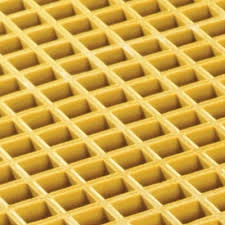loading...
- No. 9, Xingyuan South Street, Dongwaihuan Road, Zaoqiang County, Hengshui, Hebei, China
- admin@zjcomposites.com
- +86 15097380338
- Welcome to visit our website!
frp trench drain
Understanding FRP Trench Drains A Comprehensive Overview
In the ever-evolving landscape of construction and infrastructure, effective drainage systems are crucial for maintaining the integrity and longevity of structures. Among various types of drainage solutions, Fiber-Reinforced Polymer (FRP) trench drains have emerged as a favored option due to their exceptional properties and versatility. This article delves into the characteristics, benefits, applications, and installation of FRP trench drains, highlighting why they are a preferred choice for modern drainage challenges.
What is FRP?
Fiber-Reinforced Polymer (FRP) is a composite material made of a polymer matrix reinforced with fibers, such as glass, carbon, or aramid. This combination results in a lightweight yet incredibly strong and durable material that is resistant to a variety of environmental conditions. In the context of trench drains, FRP offers significant advantages over traditional materials like concrete or metal.
Characteristics of FRP Trench Drains
1. Corrosion Resistance One of the standout features of FRP is its resistance to corrosion. Unlike metal options that can rust or degrade in the presence of water, particularly in harsh chemical environments, FRP maintains its structural integrity over time. This makes it ideal for areas prone to exposure to corrosive substances, such as industrial sites or chemical plants.
2. Lightweight The lightweight nature of FRP allows for easier handling and installation. This characteristic reduces labor costs since fewer workers are required for installation, and it minimizes equipment costs related to lifting and moving heavy materials.
3. Design Flexibility FRP trench drains can be easily molded into various shapes and sizes, offering versatility for different applications. This flexibility enables architects and engineers to tailor designs to meet specific site requirements, ensuring optimal drainage performance.
4. Durability FRP products boast a high strength-to-weight ratio, which means they can withstand heavy loads and impact without cracking or breaking. This quality is particularly important in high-traffic areas where traditional drainage systems may fail.
5. Low Maintenance The longevity and durability of FRP trench drains mean that they require less maintenance over time. Their resistance to settling, erosion, and other forms of damage associated with traditional materials translates into savings on repairs and replacements.
Applications of FRP Trench Drains
FRP trench drains are utilized in various environments due to their adaptability. Common applications include
- Industrial Facilities In settings where chemical spills are possible, such as manufacturing plants or laboratories, FRP trench drains provide a safe and effective way to channel away hazardous materials.
frp trench drain

- Commercial Buildings Shopping centers, parking lots, and other commercial spaces benefit from FRP trench drains to manage stormwater runoff, preventing flooding and water accumulation.
- Transportation Infrastructure Airports, highways, and railways often use FRP trench drains to keep surfaces dry and safe for vehicles and pedestrians.
- Agricultural Land In farms where water drainage is crucial, FRP drains help to control excess water, promoting healthier crop growth and preventing soil erosion.
Installation Considerations
Installing FRP trench drains requires careful planning to ensure effectiveness. The process typically involves the following steps
1. Site Assessment Engineers conduct a thorough assessment of the site to determine drainage needs, soil conditions, and local regulations.
2. Design and Sizing Appropriate sizing is critical to ensure adequate flow capacity. The design should consider factors such as peak rainfall intensity and the type of runoff expected.
3. Preparation of the Trench Digging the trench to the required dimensions is the next step. The trench must be level to facilitate proper drainage.
4. Placement Once the trench is prepared, the FRP drain is placed securely within it, ensuring that it aligns with any connecting drainage systems.
5. Backfilling and Finishing After placement, the trench is backfilled with appropriate materials to support the drain and restore the surrounding area.
Conclusion
FRP trench drains present a revolutionary solution for effective drainage management in various applications. Their unique properties—corrosion resistance, lightweight, durability, design flexibility, and low maintenance—make them a superior choice over traditional materials. As industries continue to prioritize sustainability and efficiency, the adoption of FRP trench drains is likely to increase, setting the stage for improved infrastructure and environmental management. Whether in commercial buildings, industrial facilities, or agricultural lands, FRP trench drains provide a reliable answer to modern drainage challenges.
-
GRP Structures: The Future of Lightweight, High-Performance EngineeringNewsJun.20,2025
-
FRP Water Tank: High-Performance Storage for Corrosive and Clean Water SystemsNewsJun.20,2025
-
FRP Square Tube: The New Industry Standard for Chemical and Structural ApplicationsNewsJun.20,2025
-
FRP Pultruded Profiles: The Ultimate Choice for Lightweight Structural StrengthNewsJun.20,2025
-
FRP Handrails: The Safer, Smarter, and Stronger Choice for Modern InfrastructureNewsJun.20,2025
-
FRP Grating: The Smart Solution for Durable, Lightweight Industrial FlooringNewsJun.20,2025
-
Why Choose a Galvanized Water Tank for Your Storage NeedsNewsMay.21,2025
